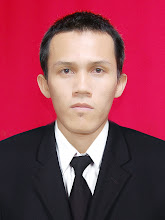Does Thermal Biofeedback Combined with Progressive Muscle Relaxation Blood Pressure in Clients with Essential Hipertension?

This study measured the effect of thermal biofeedback training combined with progressive relaxation training in the treatment of female client who were diagnosed with essential hypertension. The sample consisted of 19 adult women 30 to 59 years of age who were not taking antihypertensive medication. Blood pressure decline was measured on the treatment group of 11 clients, who underwent thermal biofeedback combined with progressive muscle relaxation training, and on the control group of 8 clients who underwent only progressive muscle relaxation training.
For both groups, baseline blood pressure was measured four times for 2 weeks. For the treatment group, blood pressure was measured twice, once before and once after each of the eight sessions of thermal biofeedback training for 4 weeks. For the control group, blood pressure was measured at every other visit to a clinic for progressive muscle relaxation self-training, twice before and after the self-training. On average, the treatment group[ experienced a decline in systolic blood pressure of 20.6 mm Hg and a decline in diastolic blood pressure of 14.4 mm Hg. In the control group, both systolic and diastolic blood pressure tended to increase.
Implications: Nurse should be knowledgeable about thermal biofeedback and progressive muscle relaxation techniques so that they can teach clients effective ways to manage essential hypertension in conjunction with other physician-prescribe treatments.
For both groups, baseline blood pressure was measured four times for 2 weeks. For the treatment group, blood pressure was measured twice, once before and once after each of the eight sessions of thermal biofeedback training for 4 weeks. For the control group, blood pressure was measured at every other visit to a clinic for progressive muscle relaxation self-training, twice before and after the self-training. On average, the treatment group[ experienced a decline in systolic blood pressure of 20.6 mm Hg and a decline in diastolic blood pressure of 14.4 mm Hg. In the control group, both systolic and diastolic blood pressure tended to increase.
Implications: Nurse should be knowledgeable about thermal biofeedback and progressive muscle relaxation techniques so that they can teach clients effective ways to manage essential hypertension in conjunction with other physician-prescribe treatments.



0 Comments:
Post a Comment
Subscribe to Post Comments [Atom]
<< Home